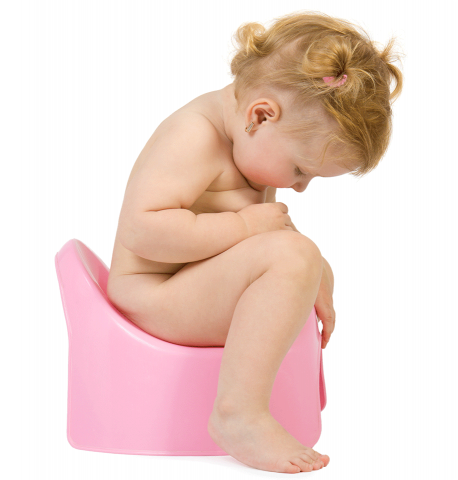Learning to use the Toilet
Learning to use the toilet is a positive part of your child's development and progression. When your child is able to use the toilet, this is a significant landmark in their level of independence.
Setting the Stage
Getting ready to teach your child how to use the toilet, can actually begin very early on. So early, you can start to prepare from birth! How? Using cloth nappies from the start, allows your baby to feel what is happening when they get wet or soiled. Disposable nappies are designed to remove those sensations. Without them your baby is deprived of an experience of the natural consequences of urination or having a bowel movement.
If you use cloth nappies, change your baby as soon as their nappy is wet or soiled. Apart from the hygiene factors involved, changing them straight away demonstrates to them that the normal and desired experience is to be dry and clean.
When your baby is able to sit independently, you might like to try encouraging them to sit on a potty before having a nappy change, or getting in the bath.
Giving your child the opportunity to watch you on the toilet is another great way to support your child's Toilet Learning.
Nappy-free time is another great way for your baby to experience the sensations when they urinate or have a bowel movement. This is called Toileting Awareness and it occurs in 3 stages:
- Your child is aware that they have just toileted
- Your child is aware that they are toileting right now
- Your child is aware that they are about to toilet.
These different awarenesses occur at their own pace and cannot be rushed. The more experience your child has with the sensations relating to each awareness the more rapid their progress will be.
Getting Ready
From a physical point of view, your baby will have voluntary control over their ability to urinate and defeacate once they are able to walk independently. In order for your baby to be able to walk, the nerve fibres of their central nervous system must have become insulated with myelin. Myeline is a fatty coating which gradually sheaths your baby's nerves, enabling electrical messages to pass quickly between their brain and the muscles of their body. The Myelination Process takes place rapidly during your baby's first year. It begins at the base of your baby's brain and travels down their spine and out along their limbs. The extent to which your baby's nervous system has been myelinised determines how fast they are able to acquire new co-ordinated movements. When myelination has reached your baby's legs, it has to have passed through their groin. This means that your baby has voluntary control of their urethra and anus. They just may not know it yet! This is Toileting Awareness.
To a large extent this process is determind by your own readiness to embark upon the adventure. A positive and consistent attitude is essential. This process requires patience and understanding, it can take time to learn how to use the toilet. If we call the times when a child toilets on the floor or in their underwear, an 'accident' then we create a negative association for the child, because an 'accident' is when something bad happens. Consistency is also important. If we put a child in underwear one day, but then in nappies the next, we risk confusing them and prolonging the process.
Once you've decided that you are ready, you will need to organise a few things:
- underwear and a change of clothes
- a potty for the bathrooom
- two buckets, one with water, disinfectant and clearning cloths for when your child toilets on the floor; the other to soak used underwear in before going into the wash.
Go...
The first step is to put your child in underwear. Then, once the nappy is off, build frequent potty sitting time into your routine. There is no need to ask, just say, 'It's time for us to sit on the potty.'
Being prepared when your leave the house will help you to remain calm. You will need:
- spare clothes
- a bag to put wet or soilded clothing in
- cloths or wipes to clean up
When your child wets or soils their underwear, help them to clean up. You can also encourage them to sit on the potty to see if there is any more. This helps to build the association between toileting with the potty.
When it is time to transition to the big toilet, a wide secure stool will enable your child to step up and turn around to sit down on the toilet.
Be patient and hang on in there - trust your child's process. Some children take longer than others, but everyone gets there in the end!
You can find further detail about this approach to supporting young children to learn how to use the toilet in this booklet.

